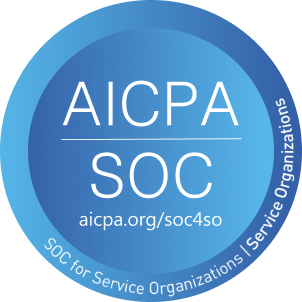Understanding the Institutional Market Structure of Cryptocurrencies and Its Asset Types
When it comes to the cryptocurrency institutional market structure, the first thing that comes to one’s mind is ‘exchange’. In this series of articles however, I intend to elaborate on the broad crypto institutional infrastructure and participants who perform important functions that cryptocurrency exchanges may not be fulfilling. Hence I’d like to really focus on such entities, which enable the smooth functioning of the entire digital asset ecosystem.
Crypto Exchange vs. Crypto Financial service provider
In essence, the narrow denotation of an exchange in the market is that of a liquidity pool. From the perspective of the pool, the easiest way to divide all participants is in two categories of ‘Taker’ & ‘Maker’. Takers (such as a traditional institution wants to allocate BTC assets) are those who get liquidity from the pool, and Makers (such as crypto market maker) are those who provide liquidity. Of course, taker institutions will place Maker orders at certain times. For example, when the transaction volume is large, they will use the algorithmic trading system to split Taker orders into Maker orders. However, compared to professional market makers, the amount of “Maker orders” from taker institutions can be ignored, so these specific institutions are still classified as Takers.
The crypto market size is relatively small and to some extent lacks not only sufficient regulations, but also credible institutions. This gives crypto exchanges the opportunity to play a much broader role as compared to the limited activities of traditional finance exchanges, and become one-stop crypto financial service provider. Needless to say about borrowing & lending, most major exchanges are providing mining pool as standard offering, and some exchanges also set up their crypto fund, which would be outside of any traditional exchange’s business scope. These businesses can basically be regarded as the subsidiaries of the crypto exchange as a parent group company.
In addition, the mining pool business is not regarded as a financial service by some market participants, but in fact, it is essentially a process of centralized purchasing of the computing power of the miners, i.e. the investors’ assets, and then redistributing the benefits. Hence, a mining pool is a technology-oriented financial service organization and I will elaborate more on this later in the article.
Emerging institutions in crypto market
From the perspective of ‘senior’ market participants, they are observing an obvious shift of focus from retail market to institutional market. The key institutions that I would like to highlight are the investment institutions (buy-side), financial service companies (sell-side) and custodians that are associated with the pool. Even though these services are conducted by an exchange (subsidiary of exchange), I will analyze each as an independent subject in my subsequent articles.
In China since 2019, financial service companies such as Babel and Matrixport, that mainly serve large customers/institutions have been gradually expanding. The European and American institutional market evolved earlier due to a higher degree of compliance. As early as 2017, there have been a few crypto over-the-counter(OTC) liquidity providers to help investment institutions enter the market. To name a few that provide related services — JUMP, long established institution from traditional market, and Cumberland which belongs to DRW. Recently, some companies with proprietary-trading department and crypto asset management business have launched structured products based on derivatives. Also, some tech platform companies with crypto mining service background have launched various types of financial services to mining clients (similar to commodity trading). These developments show the emerging demand and supply for in-depth financial services, within the cryptocurrency institutional market.
One consensus in crypto industry is that CeFi is copying the traditional financial market structure. Of course, there are many differences if we look in details, such as different assets, stronger global linkage, and latest technologies. However, in essence, from a financial perspective, CeFi treats cryptocurrencies as a new asset type and applies the structure of traditional financial market such as stocks, FX, and commodities to them.
To a certain extent, DeFi is also replicating the traditional financial market. Although the organizational form of a DeFi company is more blockchain-based (also called community-based) and relatively more transparent, the essence of its financial service offering is still the same — be it lending / collateral rule or Automated Market Maker’s quotation logic.
In short, we can foresee that the overall structure of market participants in the crypto industry after 5 years can basically map the structure of the traditional financial market.

Considering the scale of the traditional finance market and its development over the last century, no doubt there’s a long way to go until the cryptocurrency market structure mirrors that of traditional finance. But this on the other hand, means that there are plenty of opportunities.
Therefore, through my articles I intend to not only aid a deeper understanding of the financial business, but also to explain the correlation between traditional institutions and cryptocurrency institutions.
First of all, the fundamental of entire financial market is the co-dependent relationship between funds and assets. Both traditional finance (Tradfi) and cryptocurrency (Crypto) funds aim to invest in quality assets for profit, while these assets depend on fund capital to achieve their goals.
For example, when an entrepreneur creates a company, it is equivalent to creating an asset. The entrepreneur needs to begin equity financing and obtain funds to complete his/her business goals. Venture capital companies are common sources of funding for such assets. This type of asset has high risks and no principal protection, but it does have high returns. For another example, if stock traders hope to get more capital for trading, they can choose to borrow money with a fixed interest to increase their capital. This creates a principal-protected fixed-income asset with low risk.
Mainstream crypto asset types
Moving on to throw light on assets classes, the following lists the mainstream asset types within the crypto market:
1. Underlying assets
● Crypto Currencies
These can be as large as BTC and as small as other mimicking coins. From heavyweight mature investors to newer nascent ones, they all invest in such assets.
● Cryptocurrency mining machine
Obtaining a machine means mining your own cryptocurrencies, as an alternative to buying. It is relatively complicated because it also involves computing power. Investors expect to obtain BTC and other coins at a lower cost within a period of time. In addition, the mining machine itself also has a transaction price in secondary market, but liquidity is poor.
2. Upper assets
I have used the term ‘upper’, because such assets are the encapsulation of underlying assets. The operator of such assets will raise money, and further invest the funds in the underlying assets.
● Crypto beta fund assets
■ Simple crypto Beta funds (such as BTC funds, leveraged crypto funds, etc) allow investors to enjoy the appreciation of BTC by investing in these funds and hence eliminating the need to manage their own wallets, private keys, etc. The US compliant Beta Fund Grayscale’s fund size has exceeded $5 billion.
■ A complex multi-coin hybrid fund, also called Smart Beta, generally sets up an index first, and these types of crypto fund manager aims for it to exceed the performance of the benchmark such as BTC. This is similar to an ETF in the traditional financial market.
● Alpha crypto fund assets
■ These are absolute income funds (such as hedge funds) and their biggest variance from Beta crypto funds is that investors want relatively stable returns no matter how the market changes. They focus on market-neutral strategies, such as market-making strategies, arbitrage strategies, etc.
■ Crypto FoF/MoM Fund. Considering that there are a variety of absolute return strategies in the market, institutions with strong fund-raising capabilities will allocate funds to a number of crypto hedge funds which are good at different strategies, namely crypto Fund of Funds, Manager of Managers. There is a slight difference between these two funds, and I will go into the details in my next article.
● Loan crypto assets
● Investors expect a stable return with fixed interest
● Considering that the current industry is still dominated by trading and investment, the borrower will eventually invest crypto funds in the underlying assets.
3. Crypto Derivatives
● Same as the tradfi markets, crypto derivatives can be displayed in the form of futures, options, swaps, etc, and the transactions can either be conducted on crypto exchange or as cryto OTC(over-the-counter) trades.
● The goal is to change the yield curve of other assets, for example — by sacrificing part of the potential return, for the sake of lower risk exposure. Crypto structured products such as dual currency and zero interest crypto loans can help create a preferred yield curve with the guidance of crypto wealth advisors.

When it comes to crypto derivatives, we must first mention the “inter-institutional trading market”. Its position in the industry structure is actually in the same category as exchanges, but its participants are mainly institutions, so the number of participants in this market is much smaller than the number of users on the exchange. As the volume for each order is large, the orders are generally not standardized. A typical example is Paradigm, which is a crypto OTC(over-the-counter) derivatives trading market place.

No matter which type of institution enters the market, in addition to having resources to construct their crypto product offering, they also require a complete set of mature and deeply adapted business functions including crypto transactions, crypto isk control, process management and other framework, as the scale of management becomes larger. To support this entire framework, a high-grade Information crypto system infrastructure becomes inevitable.
1Token — system service provider for crypto institutions
Rooted from crypto quant trading, 1Token has the unique trading know-how and technology capabilities to build:
- Up-to-date and high confidence connection to all crypto trading venues, across DeFi and CeFi
- Top-down, bottom-up crypto P&L calculations, and crypto fund reconciliation of top-down and bottom-up results
- Real-time crypto trading metrics calculation, monitor and alerts tailor-made for different types of crypto funds, crypto FoFs, and crypto prime brokers
- T+0 crypto shadow NAV accounting system with subscription, redemption, dividend, cost accruals
1Token has been serving global digital asset managers, crypto fund platforms, crypto fund admins, and crypto auditors, enabling them to conduct crypto-related business without any concern on technology. 1Token is undertaking SOC2 audit, and provides on-premise deployment to regulated clients.







Comments ()